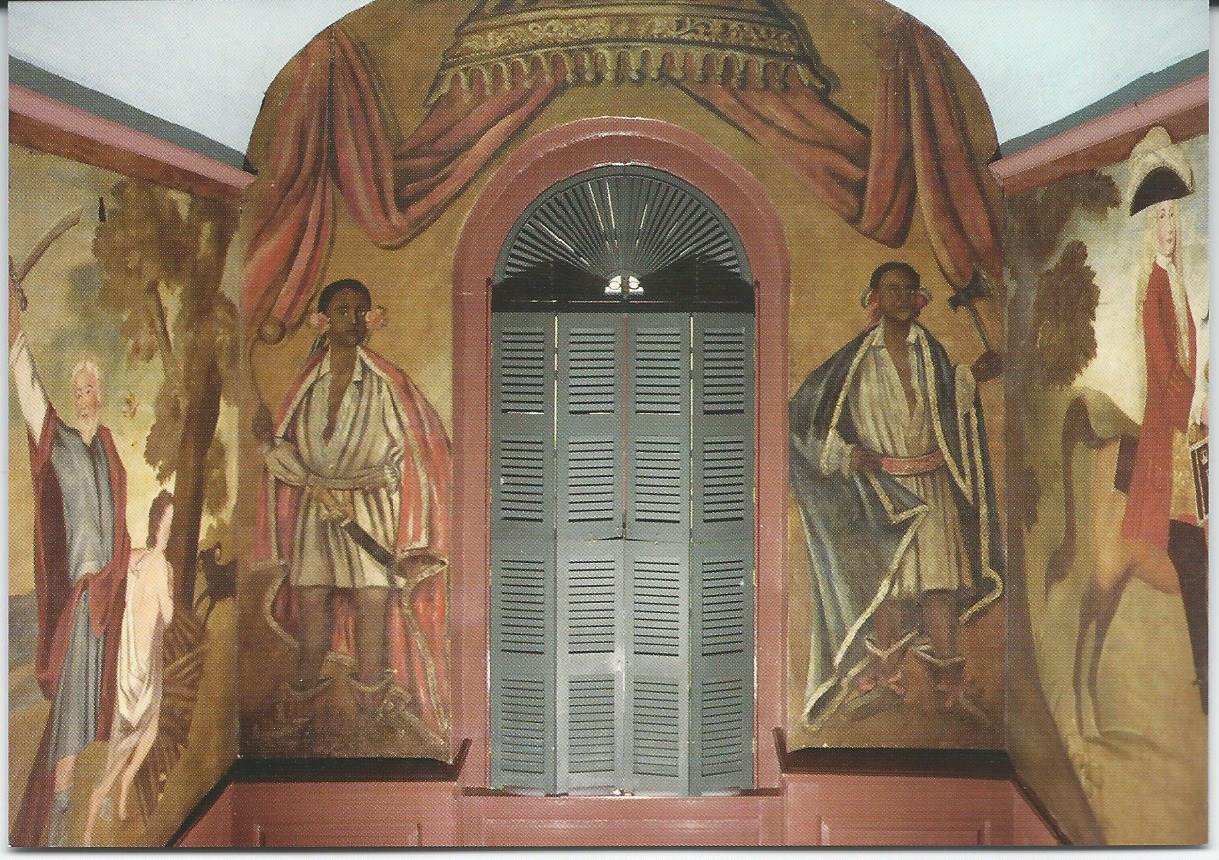Home Structural Products & Services, Stairlifts Structural Products & Services, Stairlifts Furniture, Clocks,
Accessories
Reclaimed Stone Materials
Woodwork, Blinds,
Finishing
Lighting
Kitchen
Floors & Rugs
Fabrics
Paint & Wallpaper Pottery & Tile
Period Hardware Antiques, Folk Art,
Fine Art, Auction Houses
Windows
Interior Design & Architecture
Silver, Cookware, Pewter
Garden
Historic Hotels |

WARNER HOUSE - a mirror ball of history
By Richard Springer and Marianne Grube


The MacPheadris-Warner House in Portsmouth, NH may very well be the finest of all early-Georgian brick houses in New England. Now known simply as the Warner House and a guided museum, it was erected in 1718-1723 by an Irish immigrant sea captain, Archibald MacPheadris. It is one of the earliest Wren-type houses in New England with 15 “ thick bricks walls (bricks tally-signed by masons) 2 ½ stories and a grand row of parallel roof peaks ended on both sides by broad, high chimneys and an imposing cupola in the middle. It sits on a rise in downtown Portsmouth overlooking the changing harbor and is a virtual history lab with unique features like a Southern plantation house plan directly in the middle of a Yankee seaport town. The house reflects the story of a prosperous commercial lineage from early colonial trade adventures through high political office to a Port town’s hard times and rebirth.
It's a fascinating place, with a history preserved and restored by the unflagging efforts of iron willed Historical Society Ladies and their troop who snatched the property from an oil company attempting to buy it out to put in a filling station. They put out the word inspiring the eventual return of many heirlooms back to the old manse and renewing its prominence. The large rack of caribou antlers in the entry hall, a gift to MacPheadris from area Indians, remains from the first period up to the 1760’s.
Built & owned by a series of wealthy Merchants and their relatives, it is a treasure trove of period articles and building details such as a library of hand bound books for the young daughter Polly, the round glass ‘Charm Orb” hanging in the parlor to draw good spirits and reflect light and ornate iron firebacks in the hearths. One of the great prizes of the house was a series of striking, large murals painted on the walls of the stairway to the second floor in 1720 -. These are believed to be the oldest Painted Murals in the colonies.. They are of varied subjects, ranging from fine images of area Indians in formal gear, to a Prince rearing on a pony as well as some bizarre symbolism of eagles, weaving women, cradles and Abraham’s sacrifice.

 |
The orginal owner, Archibald MacPheadris, was an entrepreneurial ship owner and merchant who found the rough and tumble northern colonies most to his taste, bringing many luxuries to the fashionable Portsmouth wealthy … often skirting formal legal obstacles. He married Sara Wentworth who outlived her husband and remarried then rented it to her brother, the Royal Governor, who made it his home and official seat. Matters of state were often conducted in his large bedroom with the sparkling ground cobalt painted walls of ‘smalt’.
In 1763 Benjamin Franklin and his son passed through Portsmouth on their swing to establish the new National Post Office system. Franklin came down with a bad cold and spent time here recovering, probably enjoying the hospitality of Warner House. It is noted that when he left the high chimneys and gables sported new Franklin pointed lightning rods. Parts of the original are actually still visible today. |
|
|



 


  

|

 Structural Products & Services, Stairlifts
Structural Products & Services, Stairlifts![]()











